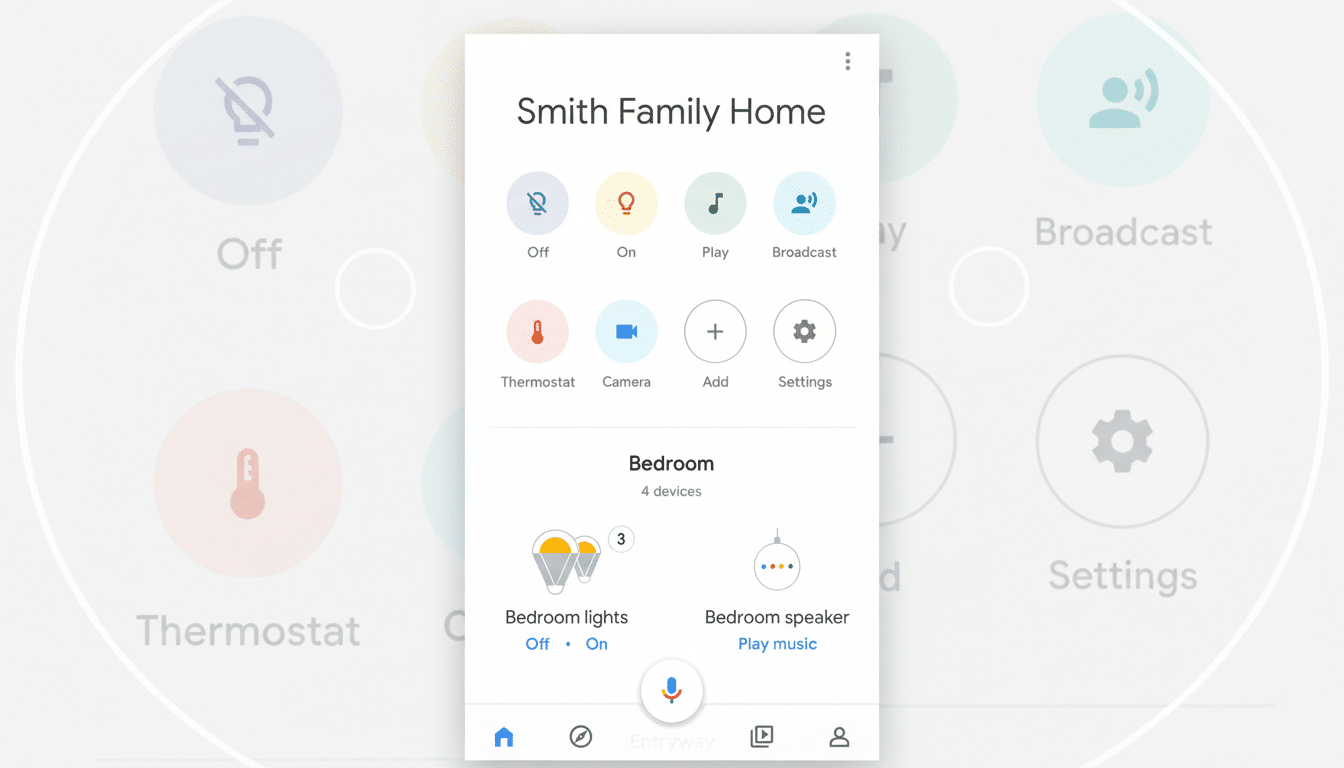Google is stepping up its smart home game in a big way with an impressive Google Home upgrade that increases speed, polish and reliability — at least, it seems there’s a catch. The new features are being introduced first through the Google Home Public Preview, the company’s opt-in test channel for Android and iOS. Among them, early adopters can expect smarter controls of their devices, better animations and — for Android users who have a Matter hub — faster local control that continues even if you lose your connection to the internet.
Though the stage has frequently been reserved for Gemini integrations, what we’re seeing now is an update knocking out many of those daily actions that people use constantly: turning on lights, dimming brightness, and accessing favorite devices with fewer steps and less wait time.

What’s New for Google Home in Public Preview
Google is polishing up the core Home app experience with design and interaction tweaks intended to “reduce friction.” A swipe-down quick-access panel is new here and surfaces recent and favorite devices without needing to dive into a room or menu; it makes routine tasks feel lightning-quick.
Lighting controls stand to benefit the most in terms of usability. The percentage for brightness is now outside the slider, so it’s easier to read, and there’s haptic feedback as you adjust levels — a minor addition that adds to the app’s overall tactility and precision. A dedicated power button has replaced the old tap-to-toggle functionality on the slider itself to avoid accidental taps. The color picker changes to a carousel, which is a faster thumb-through-able affair than a grid, on phones in particular.
Elsewhere, smart plugs receive an updated on/off animation and tabs feature more card-like Material 3 Expressive looks that make for better hierarchy and readability. Testers who have tried the build note that, taken together, the small visual flourishes make for a more assured and seamless interface.
Speed And Resilience, From Local Matter Control
The marquee tech change is local control for Matter devices on Android when a Matter hub — i.e., Nest Hub 2nd gen or Nest Wi‑Fi Pro — is around. Instead of going to the cloud and back, commands are sent directly from the app to your devices over your home network. That often cuts seconds off a lamp-on or plug-toggling action that feels obvious when your broadband is still out.
Why it feels faster: A home Wi‑Fi round trip is typically measured in low, single-digit milliseconds; cloud requests can add hundreds of milliseconds once you factor in server hops and congestion. The distinction is the span between “instant” and “noticeable.” Local routing also minimizes reliance on services beyond your control and can help keep routine device traffic that leaves your home to a minimum, an increasingly pressing concern for the privacy-aware.

Local control in this case is limited to Matter-compatible products; things that aren’t Matter devices will behave as they always have. If you’re using iOS, then the UI enhancements are available now, but local control is an Android exclusive for this rollout.
Who Can Try It and What to Expect in Public Preview
The Google Home Public Preview is an opt-in that you can access on Android and iOS. Features in this channel are almost ready for primetime, but may be tweaked based on feedback before they make it to the stable app. If you join, look for incremental updates over the coming weeks as Google continues to adjust animations, layouts and device cards.
For the best experience, Android users should make sure you have a compatible Matter hub set up, and your Matter devices are onboarded through Google Home. Once established, standard controls — especially lights and plugs — should feel snappier and more responsive during internet hiccups.
Why It’s a Big Deal for Smart Home Adoption
Small victories in speed and clarity tend to do more for mainstream smart home adoption than flashy demos. Over 40% of U.S. broadband households own at least one smart home device, according to Parks Associates, although churn and frustration bite. And faster response, cleaner controls and fewer mis-taps are precisely focused on those pain points.
This development also highlights the industry’s embrace of local control with Matter, the interoperability standard supported by the Connectivity Standards Alliance. Apple’s Home, Amazon’s Alexa and other platforms already support local paths where available; Google’s own expansion here is all the more reason to believe that “instant and reliable” is the new baseline expectation for mundane automations.
Bottom line: If you’re already committed to Google’s ecosystem and looking for the fastest route between here and a less frustrating smart home, the Public Preview brings tangible, day-to-day improvements today — especially if your setup includes a Matter hub along with compatible devices. The polish and performance here seem less like an experiment and more the way Google Home should work out of the gate.

